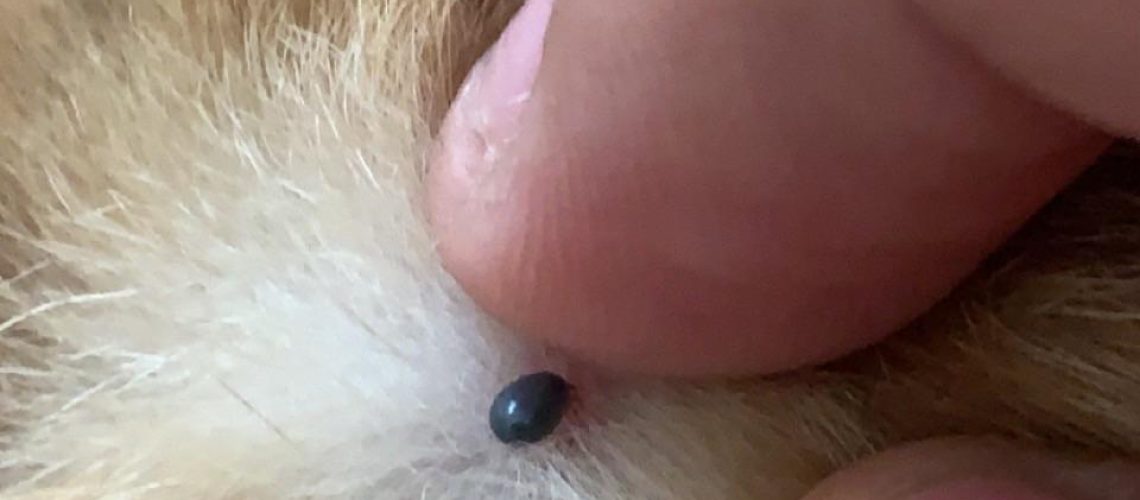Are you a cat owner who has noticed small, fleshy growths on your furry friend's skin? If so, you're not alone. Skin tags on cats are a common occurrence that many pet owners encounter. While these benign growths may seem harmless, understanding the ins and outs of this topic can provide valuable insights into your cat's health and well-being. By delving into the world of skin tags on cats, you'll gain knowledge that can help you identify potential issues early on, ensuring your feline companion receives the care they deserve. So, let's explore everything you need to know about skin tags on cats and how it relates to their overall health and happiness.
Key Takeaways:
- Skin tags are common in cats and are usually harmless growths of skin.
- They can vary in size, shape, and color and are often found around the neck, under the arms, or on the belly.
- If a skin tag suddenly changes in appearance or causes discomfort to your cat, it's important to have it checked by a veterinarian.
- Treatment for skin tags may involve surgical removal if they become irritated or interfere with your cat's daily activities.
- Prevention of skin tags in cats is not always possible, but maintaining good overall health and regular grooming can help reduce their occurrence.
Understanding Skin Tags on Cats: What They Are and Why They Occur
Skin tags are small, harmless growths that can appear on a cat's skin. They usually look like tiny flaps of skin attached to the body by a thin stalk. These growths are quite common in cats and can occur at any age. While the exact cause of skin tags is unknown, they often develop in areas where there is friction or rubbing against the skin, such as the neck, armpits, or groin.
Although skin tags may look similar to warts or tumors, they are actually benign and pose no health risks to your cat. Skin tags are not contagious and cannot be spread from one cat to another. However, it's important to keep an eye on them as they can occasionally become irritated or infected if your cat scratches or bites at them excessively.
Why do skin tags occur?
The exact reason why some cats develop skin tags while others don't is still unclear. However, there are a few factors that may contribute to their occurrence:
- Friction: Areas where the skin rubs together or against objects can create irritation and lead to the formation of skin tags.
- Aging: Older cats tend to have more skin tags than younger ones. This may be due to changes in the elasticity of their skin over time.
- Hormonal imbalances: Some hormonal imbalances in cats can increase the likelihood of developing skin tags.
Are certain breeds more prone to skin tags?
While any cat can develop skin tags, certain breeds may be more predisposed to them. Persian cats, for example, have a higher likelihood of developing these growths compared to other breeds. However, skin tags can occur in cats of all breeds and mixed breeds.
Identifying Skin Tags on Your Cat: How to Spot Them
Skin tags are small, soft growths that can appear on your cat's skin. They often look like tiny flaps of skin or small bumps that hang off the surface. These growths are usually harmless and painless, but it's important to be able to identify them so you can monitor their size and appearance.
To spot skin tags on your cat, carefully examine their skin for any unusual growths. Look for small protrusions that may be attached by a thin stalk or appear as raised bumps. Pay attention to areas where friction occurs, such as the neck, armpits, or groin. Skin tags can vary in color from flesh-toned to darker shades, depending on your cat's fur color.
Common Characteristics of Skin Tags:
- Small size (usually less than half an inch)
- Soft and flexible texture
- Hanging or protruding appearance
- Painless when touched
Skin Tags on Cats: Harmless Bumps or Something More?
If you've noticed skin tags on your cat, you may wonder if they indicate a more serious health issue. In most cases, skin tags are benign and pose no threat to your cat's well-being. However, it's essential to keep an eye on these growths and monitor any changes in size, shape, or color.
In rare instances, skin tags can become irritated or infected if they get caught on something or if your cat excessively scratches or bites at them. If you notice any signs of discomfort such as redness, swelling, bleeding, or discharge around the skin tag area, it's best to consult with a veterinarian for further evaluation.
When to Seek Veterinary Advice:
- If the skin tag changes in size, shape, or color
- If your cat shows signs of discomfort or irritation
- If the skin tag becomes swollen, red, or starts bleeding
- If you're unsure whether the growth is a skin tag or another type of skin condition
Treating and Removing Skin Tags on Cats: What You Need to Know
In most cases, treatment for skin tags on cats is not necessary unless they cause discomfort or interfere with your cat's daily activities. If your cat's skin tags are bothering them or if you're concerned about their appearance, consult with a veterinarian who can provide appropriate guidance.
The removal of skin tags is typically a simple procedure that can be done by a veterinarian. Depending on the size and location of the skin tag, different methods may be used. These can include surgical excision, cryotherapy (freezing), or cauterization (burning) to remove the growth safely and effectively.
Methods for Removing Skin Tags:
- Surgical excision: Cutting off the skin tag with sterile instruments
- Cryotherapy: Freezing the skin tag to destroy it
- Cauterization: Using heat to burn off the skin tag
Managing Skin Tags on Cats: Home Remedies and Natural Treatments
While professional veterinary care is recommended for treating and removing skin tags on cats, there are some home remedies and natural treatments that may help manage these growths. However, it's crucial to consult with a veterinarian before attempting any DIY treatments to ensure they are safe and appropriate for your cat.
One potential home remedy is applying a warm compress to the skin tag area to help reduce any inflammation or discomfort. Additionally, some natural products, such as aloe vera gel or diluted tea tree oil, may have soothing properties that can be applied topically. However, always follow your veterinarian's advice and instructions when using any home remedies.
Home Remedies for Managing Skin Tags:
- Applying a warm compress to the skin tag area
- Using aloe vera gel or diluted tea tree oil topically
- Ensuring proper hygiene and cleanliness around the skin tag area
Preventing Skin Tags on Cats: Tips for Reducing Their Occurrence
While it may not be possible to completely prevent skin tags from developing on your cat, there are steps you can take to reduce their occurrence. Maintaining good overall health and hygiene for your cat is essential in minimizing the likelihood of skin tags.
To help prevent skin tags, regularly groom your cat by brushing their fur and inspecting their skin for any abnormalities. Keep their environment clean and free from potential irritants or allergens. Additionally, providing a balanced diet with proper nutrition can contribute to healthy skin and coat condition.
Tips for Reducing Skin Tag Occurrence:
- Groom your cat regularly by brushing their fur
- Inspect their skin for any abnormalities or growths
- Maintain a clean environment free from irritants
- Provide a balanced diet with proper nutrition
Consulting a Veterinarian for Skin Tags on Cats: When to Seek Professional Advice
If you're unsure about how to handle skin tags on your cat or if you have any concerns, it's always best to consult with a veterinarian. They can provide expert advice and guidance tailored to your cat's specific needs.
A veterinarian will be able to accurately diagnose the skin tags and determine if any further action is necessary. They can also address any questions or concerns you may have regarding your cat's health and well-being.
When to Consult a Veterinarian:
- If you're unsure about how to handle skin tags on your cat
- If you have concerns about the appearance or behavior of the skin tags
- If the skin tags are causing discomfort or irritation for your cat
- For professional diagnosis and appropriate treatment options
In conclusion, skin tags on cats are harmless growths that can occur due to various reasons. While they may not cause any harm or discomfort to your furry friend, it is important to monitor them and consult a veterinarian if they change in size, color, or cause any irritation.
Should I remove my cats skin tag?
In most cases, cat skin tags do not need to be treated as they are typically harmless and do not cause any pain. However, if a skin tag on your cat is causing discomfort or irritation, it may be recommended to have it removed.
How do you get rid of cat skin tags?
The most effective and secure approach to addressing a skin tag on your pet is to have our team of veterinarians examine the pet first. Our veterinarians will carefully assess the tag to determine if it is benign or potentially more concerning. We can safely eliminate the skin tag by using a gentle freezing method.
Why is my cat getting skin tags?
Certain cats are genetically prone to developing these specific types of growths. As cats get older, they have a higher chance of experiencing excessive skin growth. However, benign growths like skin tags or warts do not have a negative impact on the overall health of affected cats.
When should you worry about skin tags?
If a skin tag starts bleeding, becomes irritated, or obstructs your vision, it is advisable to have a doctor remove it. Alternatively, you may opt for removal for aesthetic purposes.
What happens if you don't remove skin tags?
Skin tags are generally considered harmless and not dangerous, so it is not required to have them removed. However, some individuals opt to remove them for cosmetic purposes or if they become bothersome due to their location. It is not recommended to attempt removing them on your own.
Is it bad to leave skin tags?
Skin tags are generally harmless, so you don't have to worry about them unless you observe any changes or discomfort. However, some individuals may find them annoying or unattractive and may choose to have them removed.

















